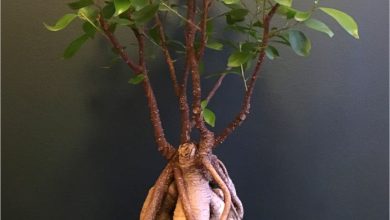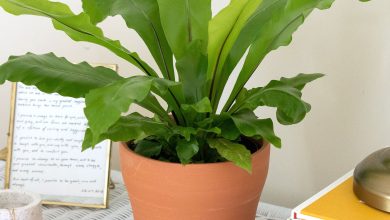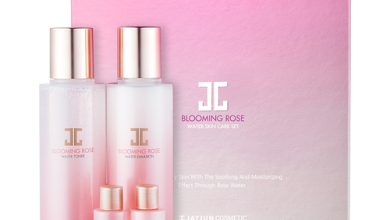Plant Anthurium: [Care, Planting, Irrigation and Substrates]
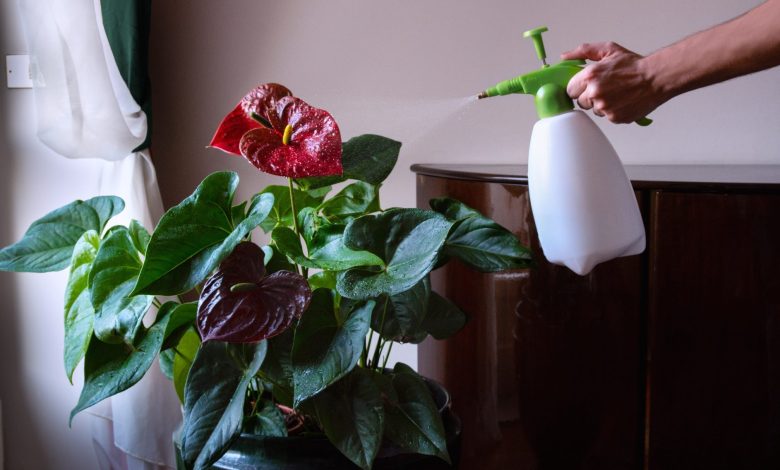
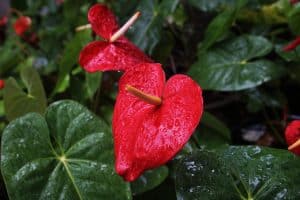 Anthurium or Anthurium is one of the most used perennial herbaceous plants in interior decoration.
Anthurium or Anthurium is one of the most used perennial herbaceous plants in interior decoration.
It reaches a length of between 30 to 40 cm. It has the peculiarity of exhibiting green, red and white tones, which generate intense contrasts, very showy.
Its intense green armored or pointed lanceolate leaves are among the most resistant of the different floral species.
Anthurium Characteristics
The most curious of the Anthurium, however, are the spadix and the spathe, which can hardly go unnoticed.
The spadices are made up of a series of clustered dots, which are actually small flowers capable of creating, all together, a beautiful inflorescence. This curious shape contains the flowers of the plant.
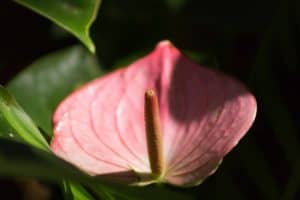 The spathe, on the other hand, is a wedge-shaped leaf that protrudes and is painted intense red, purplish red, white or apple green, on a bed of very green leaves with a pointed heart.
The spathe, on the other hand, is a wedge-shaped leaf that protrudes and is painted intense red, purplish red, white or apple green, on a bed of very green leaves with a pointed heart.
About 800 species are known around the world.
The most recognized variety worldwide has red spathes with flowers and a yellowish spadix. Anthurium andreanum and Anthurium scherzerianum are also very popular .
It comes from jungle areas of Central and South America, especially from the Colombian region. The first Anthurium was discovered in Costa Rica.
Environmental humidity is vital to survive and that is why if you want to keep the plant indoors, it will adapt perfectly well as long as you reproduce a humid environment. Let’s see what aspects are necessary to take into account so that the Anthuriums bloom all year round.
Temperature: Where to plant anthurium?
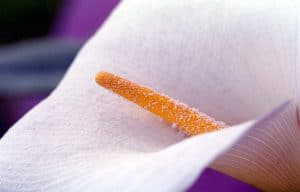 As we have already said, humidity is essential for the healthy development of a plant like this one, which, however, does not tolerate winter cold because it comes from tropical and semi-tropical areas.
As we have already said, humidity is essential for the healthy development of a plant like this one, which, however, does not tolerate winter cold because it comes from tropical and semi-tropical areas.
Ideal will then be a temperature between 15 to 29 ° C of good humidity. DO NOT allow sudden drops in temperature, because you damage the growth and flowering of the plant.
Light: How much does the anthurium need?
They should always enjoy very good indirect natural light. Nothing to expose it for long periods to the sun, because it gets sick, and much less to heat sources (heating radiators) at home.
Its leaves will burn if you subject it to direct sun.
Similarly, air currents damage it, so it is preferable to rotate it to another place where this does not happen frequently.
You must be aware of cleaning the leaves with the help of a soapy solution impregnated in a cloth to free them of all dust, because this can block the passage of light, which damages the brilliance of its red or green spathes. There are rarer species that even have black spathes.
Another important fact is that flowering occurs whenever it receives good indirect sunlight. That is why at home it is very convenient to put it under a window.
Substrate and Fertilizer: How do we prepare the land?
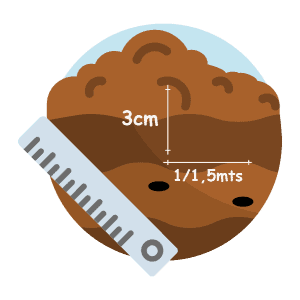 An excellent preparation for the Anthurium to develop in a pot with a good substrate would be the following:
An excellent preparation for the Anthurium to develop in a pot with a good substrate would be the following:
Prepare a compound containing 1/3 of very well shredded peat moss and add 2/3 of soil with heather previously mixed with sand.
Then a layer of peat should be placed on top of the pot to ensure constant humidity.
It is essential to preserve this humidity, which is not the same as having the plant drown in water day and night. That would kill her.
A practical way to raise humidity is to place a tray with gravel or aquarium rocks and a layer of surface water. It also serves to add other plants that serve as company. Or use a room humidifier.
Low humidity causes the leaves to stain with brown spots.
As for the typical inflorescence of this noble plant, it will manifest itself whenever you combine another good recipe like this one:
Mix peat moss, small stones or gravel and add pieces of clay and charcoal.
This combination prevents root rot caused by flooding the irrigation water and provides constant aeration that will strengthen the growth of the plant.
potassium fertilizer
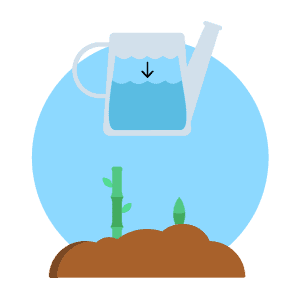 As for the supply of fertilizers, use one rich in potassium and you will have many flowers, but if you prefer a natural one, dare to prepare it yourself with banana or banana peels.
As for the supply of fertilizers, use one rich in potassium and you will have many flowers, but if you prefer a natural one, dare to prepare it yourself with banana or banana peels.
Another powerful fertilizer you can prepare at home. Use apple and tangerine peels, which you will pour into a container with water, a natural concoction that should rest for three days.
After this period, you can apply it once a month and with this you will encourage flowering, which usually lasts between two and four months.
Irrigation: How often and how do we water?
Water with little lime is the first recommendation we make for your Anthuriums to flourish.
And the second great tip is to spray its leaves. Keep in mind that overwatering kills the leaves.
In seasons as beautiful as summer and spring, water your Anthuriums twice a week, as long as you appreciate the dry soil completely.
The same rule or norm operates for the rest of the year: only water and spray the leaves when the humidity in the substrate completely ceases. This is essential so that they are always healthy.
In short, hydration must be permanent. Spraying is then a fundamental tool to fulfill this task.
Anthurium multiplication
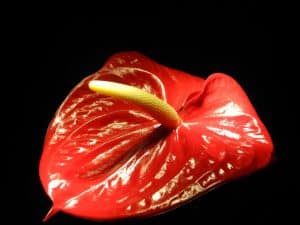 To best propagate these plants, divide the anthurium during planting, or take cuttings from the tip or stem.
To best propagate these plants, divide the anthurium during planting, or take cuttings from the tip or stem.
Older foliage plants have many exposed aerial roots and grow too tall in their pots.
These exposed roots can be cut back to ground level and planted in new pots. Roots will grow stems and sometimes leaves will emerge. These plants don’t need to be repotted as often and you can probably replant them annually or only when needed.
Anthuriums do not suffer from slight under-breeding and have room to grow. When repotting anthuriums, use high-quality potting soil.
What varieties of anthurium are there?
Anthuriums are collector’s items, and many of the best varieties are rarely found outside greenhouses and botanical gardens. The most common varieties of anthurium are the following:
- Anthurium andreanum – Feature heart-shaped leaves that grow to about 12 inches, with flowers available in red, white, pink, and assorted colors. They are distinguished by a straight flower spike.
- Anthurium scherzerianum – The most forgiving of the anthuriums, it has a curly orange flower spike and arrow-shaped leaves.
- Anthurium crystallinum – have deep green, velvety leaves with pronounced white veins. The leaves grow up to 60 cm wide.
- Anthurium faustinomirandae – A monster-sized plant with stiff cardboard leaves that grow up to 150cm long. This is almost exclusively a greenhouse plant.
Where can I buy anthurium?
It is always best to go to a local nursery or flower shop, to see the anthuriums with your own eyes.
If for whatever reason, you do not have any within your reach, we offer several options:
Anthurium – Pot 14cm. – Height approx.55cm. – Indoor plant – Live plant – (Shipping only to the Peninsula)
- Indoor natural plant.
- To help flowering, place it in a bright place.
- Medium irrigation.
- It is one of the most used indoor plants for the beauty of its flowers.
€17.90 View on Amazon Prices with VAT without transport
Last updated on 2022-07-30 / Affiliate Links / Affiliate API Images
Botanicly Indoor Plant – Anthuriums – Height: 60 cm – Anthurium Livium Red
- Plant height (including pot): 60 cm
- Delivery contains 1 natural plant
- Pot size Ø: 17 cm
- Where to locate the plant: Penumbra
View on Amazon Prices with VAT without transport
Last updated on 2022-07-30 / Affiliate Links / Affiliate API Images

![Photo of White Thistle: [Cultivation, Irrigation, Care, Pests and Diseases]](https://www.complete-gardening.com/wp-content/uploads/2022/08/white-thistle-cultivation-irrigation-care-pests-and-diseases-390x220.png)
